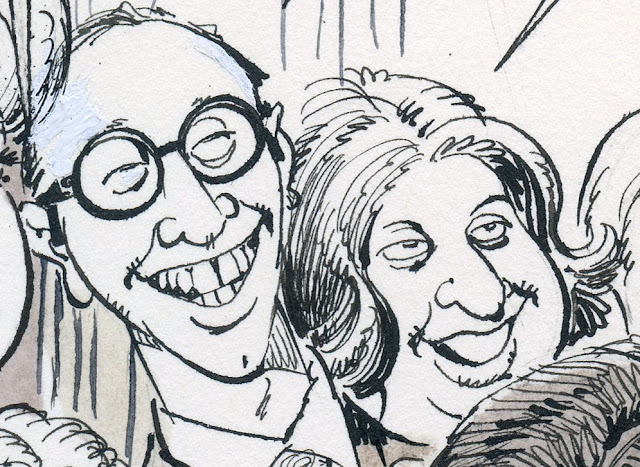At Comic-Con this year, I was struck by the number of prominent cartoonists who lectured on the virtues of simplicity.
Jim Davis, who presides over the Garfield empire, said that he tries to limit his strips to 25 words or less, and to get to the punchline in fewer than ten seconds. Davis said that if readers spend longer than ten seconds, they might guess the punchline ahead of him.
Note that there are no backgrounds or details to distract the reader. Davis also said that by using three nearly identical drawings, he spares readers the effort of thinking about transitions or shifting perspectives.
Garfield was custom made for a low effort, short-attention-span audience, which means it is wildly successful. In his talk, Davis impressed me as extremely bright and sophisticated. His marketing strategy seemed similar to the strategy of cigarette companies that genetically modify tobacco plants to make nicotine more addictive.
Kate Beaton, creator of the popular webcomic Hark, A Vagrant! was another advocate for simplicity.
Like Davis, Beaton tries to minimize the number of words (which is good because she has little enthusiasm for punctuation, lettering, and sometimes spelling). When it comes to drawing, Beaton said, "I used to be self-conscious about my art. The more I worked and tried to make it look finished, the worse it looked." Then she heard a story that made her realize she didn't need to work so hard. According to the legend, illustrator Quentin Blake once had to rush an assignment and turned in quick, unfinished sketches which his art director liked even better than Blake's finished work. This helped Beaton accept that her simple, casual sketches could be enough.
Beaton writes that her drawing process is "simplistic." I agree with her, but I suspect she meant to say "simple." ("Simplistic" means superficial, facile or oversimple. ) I think Beaton's real strengths are verbal-- her distinctive voice about historical characters and her thoughtful (and occasionally heartbreaking) stories about her home town. One might wonder why she chose an essentially visual medium to convey her ideas.
I love loose, naive drawing. Some of the greatest drawings are the ones that have attained child-like simplicity. Simplification is a wonderful discipline because it forces an artist to prioritize-- to continually sacrifice the lesser in favor of the greater until only the greatest is left. But I fear that today's comics are flooded with mediocre drawing because the fashion is to view visual quality as expendable, a "lesser priority" which can be painlessly sacrificed in favor of the text or concept.
In truth, this sacrifice hasn't hindered the success of Davis, Beaton or other mega successful cartoonists. The New Yorker, with its literary emphasis, has become a cheerleader for these priorities. Much of today's audience is incapable of distinguishing loose drawing from sloppy, careless drawing. Like Beaton, they haven't mastered the difference between "simple" and "simplistic."
This trend isn't a tragedy on the level of climate change. However, it does suggest that most art in today's strips falls short of the distinctive drawing that once made comics a great visual art form. Perhaps comics are evolving into a primarily literary medium with drawings serving a subordinate role as a mere lubricant for the words.


















